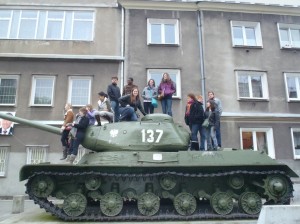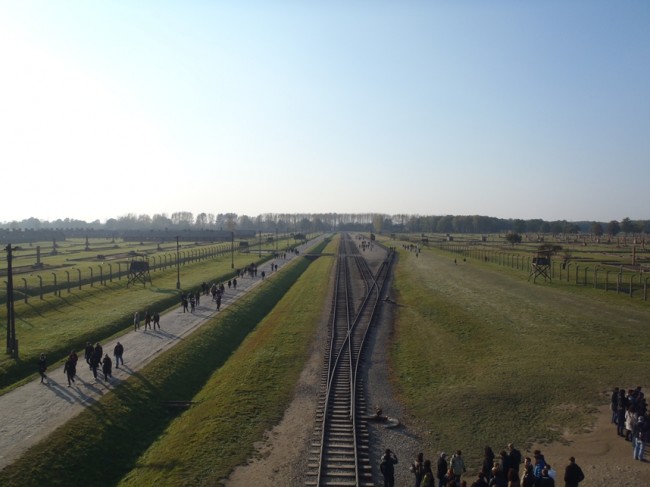Historical Excursions in Poland
While you are abroad, most programs often ensure you learn about your new country through excursions. This weekend, API took us to two historically important areas near Kraków: Nowa Huta and Auschwitz.
Before I go into my weekend, I’m going to give you guys some basics on where exactly I am studying. As I mentioned, I am in Poland, but particularly in one of Poland’s well-known cities: Kraków (in English, Cracow). I am studying at Jagiellonian University, the second oldest university in Central-Eastern Europe, as well as one of the best in Poland. To study abroad in Poland, I had to go through the non-Vandy study abroad program process, and I am using API in order to return to Vanderbilt on time for the spring semester.
Now that we have those basics settled, this weekend, our API Budapest program counterparts came to visit Kraków, and API sponsored our visits to Nowa Huta and Auschwitz.

I am going to talk about Nowa Huta first, as it’s not as well-known as Auschwitz. Nowa Huta is a small city just outside of Kraków that was built in 10 years from absolutely nothing. It was a gift to Kraków from Stalin. Nowa Huta was meant to be the ideal Communist town. The perfect distance from work and school to home, a semi-circle, an easy to maneuver layout, and you knew everyone was working together. We toured the city in two old 1964 and 1984 Trabant limousines, an older party van, and a Fiat.
This tour truly highlighted the absolute failure of Communism. People all had the exact same things, you had to wait in line for hours to hope that something was left in the store, it took two or three weeks to buy a laundry machine, and months to buy two cars to combine into one. Even if you had the money, it didn’t matter, because there was nothing around. While listening to the tour guides, it made me realize how terrifyingly close Poland was to George Orwell’s 1984 during the Communist regime.
Now, let’s travel further back in time to World War II, another horrible era in Poland’s history. Let me first say, that if you are faint of heart, do not continue reading, as I understand this is a sensitive subject.
This was my third visit to Auschwitz I, yet it was just as heart-breaking as ever. Passing underneath the replica sign (since the original sign was stolen 2 years ago), “Arbeit Macht Frei,” and understanding the true meaning behind it: a lie. It chills you to the bone. Seeing all of the artifacts found in Auschwitz when it was liberated, such as the human hair, which was sold to make textiles. Seeing faces upon faces on the wall, the days they lived through Auschwitz, and hearing the stories. Suddenly, your world becomes heaven, and you realize the true value behind everything.
However, this time was the first time I visited Auschwitz II, the section of Auschwitz with far poorer conditions than the first part. The first part was converted from a previous Polish military camp; the second part was built in the area of six Polish villages, using their homes’ lumber to make the barracks for the prisoners. We walked on the platform where thousands of people got off of trains and then were sent to their death with the idea that they were taking a shower. Only the few that were fit enough survived the initial decision.
These are the moments when you realize how much has happened in our world. These are the moments that you will never forget, because a whole new meaning attaches itself to your life. While I am in Poland, I know that every country has its shocking historical moments that open your eyes. I know I won’t remember every moment from my semester abroad, but it’s these kind of excursions that I will not forget, and they have made a tremendous difference in my entire experience.
